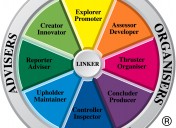How to make your customer service unforgettable
 Have you ever been asked to write down examples of ‘good’ and ‘bad’ customer experience? The ‘bad’ list is often much longer than the ‘good’ list.
Have you ever been asked to write down examples of ‘good’ and ‘bad’ customer experience? The ‘bad’ list is often much longer than the ‘good’ list.
That’s because terrible service experiences are remembered and shared. Each time the story is told, the experience is re-lived and the bad experience embedded as the ‘truth’. Alongside these (hopefully) rare occasions, we also experience lots of average, quite unmemorable service experiences, and every now and again, one that delights us.
How do we make sure 80% of our customers’ experiences are memorable for being delightful?
Know your moments of truth
Jan Carlzon, former president of Scandinavian Airlines, turned his company around with a campaign and a book called Moments of Truth. Carlzon claimed that any moment in which a person can form an opinion about you is a moment that can transform wary or sceptical customers into strong and committed brand followers (the moment of truth).
Tip: Think about how your customers interact with your products, people, place of business, packaging, policies and processes. Are you treating each contact point as a potential moment of truth and chance to delight?
The customer is always . . . the customer
Since the 1980s, many organisations have proven that providing superior customer service boosts financial results, and let’s face it: if you don’t have customers, you don’t have a job.
You’ve probably heard or seen the following saying:
Rule 1: the customer is always right!
Rule 2: if the customer is ever wrong, re-read rule 1.
We all know that it’s not always true, but by following it, you can make your customer feel listened to, which can be just as powerful as being ‘right’.
Tip: Three ways to make your customer ‘right’:
- Believe your customer
- Avoid prejudice and assumptions about the scenario and;
- Look for teaching opportunities to educate your customer. Choose your timing wisely. Angry customers won’t be receptive to your message!
While being empathetic to your customer’s position is important, it’s critical that this mindset doesn’t become a barrier to problem-solving and hinder the education process.
To the customer, you are the company
Your customers don’t know how your organisation operates, what goes on between departments or your management structure. As far as your customers are concerned, each person they talk to is the company, from your CEO to the customer service rep in your call centre and the sales assistant on your shop floor.
Tip: Use inclusive language. When speaking with customers, make sure you don’t refer to other parts of the organisation as ‘they’. This deflects responsibility and makes you seem less caring of the outcome. Use more personal pronouns such as ‘we’ and ‘I’.
Some phrases are forbidden
Some phrases will turn a reasonable customer into an angry one. Some are simply unprofessional. For example, I was recently asked to hold because someone was in the loo and wouldn’t be long!
Nancy Friedman, a customer service and telephone skills consultant, advocates a ban on the following phrases:
- ‘I don’t know’
- ‘We can’t do that’
- ‘You’ll have to . . . ’
- ‘Hang on a second, I’ll be right back . . . ’
- ‘No’ . . . when used at the beginning of any sentence
Tip: Create your own list of ‘do say’ and ‘don’t say’ words and phrases for your business unit. Do say words are the words and phrases that delight your customers, resulting in increased business and customer retention. With don’t say words, not only can you lose the immediate business, but you run the risk of becoming part of the barbecue story describing poor service.
The art of service recovery
It’s important to remember that each customer is unique. One size does not fit all, and a problem for one customer may not be a problem for another. Service recovery is about getting back to normal.
Zemke and Bell say that ‘all service recovery begins with an expectation of fairness. Customers enter the service experience with one or more pre-conceived ideas of what should happen to set things right’.
Tip: Three rules of service recovery
- Do it right the first time
- Fix it if it fails
- Remember: There are no third chances (Dr. Leonard Berry, Researcher, Texas A&M University)
Customer service doesn’t have to be hard
We are all providers and recipients of service experiences. Treat others as you would like to be treated while simultaneously acknowledging that we are all unique – and accommodate that difference in your customer service processes.
Joanna – Ancora Learning Expert Learning and Development Consultant
Joanna is a skilled consultant, facilitator and coach.
She helps organisations build a customer-first environment and create high performing teams that deliver exceptional results; a must in today’s competitive business environment.
For more information on our Customer Service Training
Call 1300 ANCORA (262 672)


















